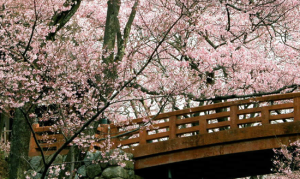Sunday
Mar202011
Spring Equinox Rebirth Renewal New Year
Spring is seen as a time of growth, renewal, of new life (both plant and animal) being born. The term is also used more generally as a metaphor for the start of better times. The word “equinox” derives from the Latin words meaning “equal night” and refers to the time when the sun crosses the equator. At such times, day and night are everywhere of nearly equal length everywhere in the world. In the northern hemisphere the March equinox marks the start of spring and has long been celebrated as a time of rebirth.
Many cultures and religions celebrate or observe holidays and festivals around the time of the March equinox, such as the Easter holiday period. The astronomical Persian calendar begins its New Year on the day when the March equinox occurs.
Major spring festivals and celebarions include: 

- Japan Shunki kōrei-sai Vernal Equinox Day (春分の日 Shunbun no hi?) This national holiday as a day for the admiration of nature and the love of living things. Spring Equinox also signals that the cherry blossom festival is just around the corner. It starts in the south of Japan and then gradually moves north in a band of pink across the country.
- Mesopotamia celebrating the beginning of each of the two half-years of the Sumerian calendar, marking the sowing of barley in autumn and the cutting of barley in spring, in the month of Nisannu (Aries). In Babylonian religion it came to be dedicated to Marduk's victory over Tiamat.
- Mexico festivales de primavera Chichen Itza is the most popular spot in Mexico to celebrate the spring equinox. The site's most famous building, The Kulkulkan temple, is the site of a dramatic display of Mayan astronomical knowledge. Archaeological site of Teotihuacan, near Mexico City, is a favorite spot to celebrate the Spring Equinox. On this date hundreds of thousands of visitors visit the site, many dressed all in white. They climb to the top of the Pyramid of the Sun where they perform rituals and stretch out their arms to receive the special energy they believe is present on that day.
- Persia Nowruz The first day of spring (celebrated on the day of the astronomical vernal equinox, which usually occurs on 21 March or the previous or following day depending on where it is observed) is the beginning of the new year, Nowruz, in the Iranian calendar. Originally being a Zoroastrian festival, and the holiest of them all, Nowruz is believed to have been invented by Zoroaster himself. Nowruz (also Naw-Rúz, Norooz, Newroz, Navroj, and many other variants) which means "New Day" in Persian language.
- India Holi or Phagwah, the festival of colors, celebrated at the end of the winter season on the last full moon of the lunar month Falgun (February/March), is the most vibrant festival of colours celebrated by Hindus in India. People throw water and apply colour powders on each other.
- Sri Lanka New Year Cultural anthropological history of the 'Traditional New Year' which is celebrated on month of April, goes back to an ancient period in Sri Lankan history. Various beliefs, perhaps those associated with fertility of the harvest, gave birth to many rituals, customs, and ceremonies connected with the New Year.
- Vietnam Tết Vietnamese use the traditional lunar as well as the modern solar calendar. They celebrate Vietnamese New Year in late January or early February is also known as the beginning of Spring. The lunar calendar is used mainly to divide the year into seasons for agriculture purposes. In the old days, the celebration used to last the entire month of January of the lunar calendar.

 Sunday, March 20, 2011 at 10:17AM
Sunday, March 20, 2011 at 10:17AM
Reader Comments (1)
Spring signals so much to so many around the globe (I had no idea, thank you for this post), it is truly an energetic time. Most evident in nature itself, with flowers blooming, birds coming alive and even the insect world is out on the prowl!